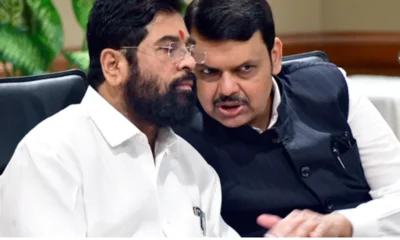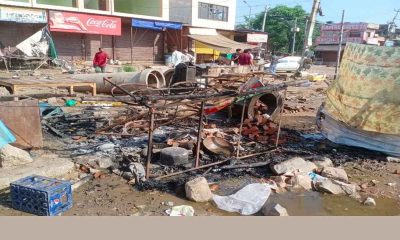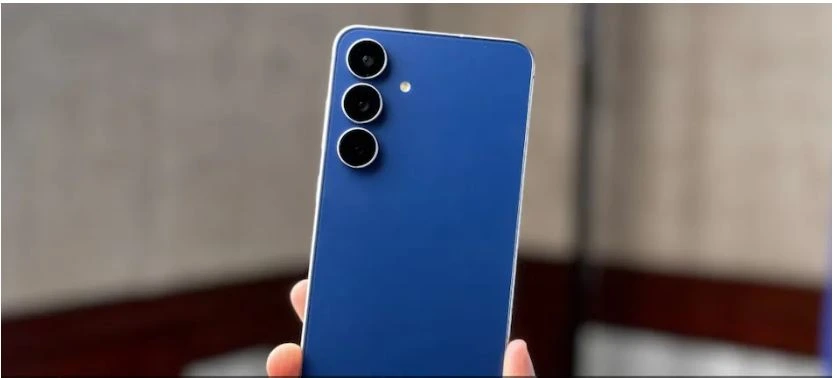~By Rashme Sehgal
Delhi is quietly switching over to Bharat Stage 6 which is exactly the same as theEuro 6 auto fuel being sold in European countries. One year later, Bharat 6 is expected to be sold across the NCR and by 2020, Bharat 6 will be sold pan India. The official date for this launch is April 1, 2018.
A derivative of Euro 6 standards, BS 6 standards will ensure a 68 per cent reduction in nitrogen oxide emissions which are a family of poisonous gases emitted from automobiles. It will also see sulphur emissions come down by 80 per cent.
India has leap frogged from Bharat 4 to Bharat 6. The original plan was to introduce Bharat 6 by 2022. This preponement by two years for the capital is being done in order to curb vehicular pollution and to shut critics who till a year ago, had gone to town describing Delhi as being the most polluted city in the world.
For Delhi to receive preferential treatment in receiving low-lead fuel is not unexpected. It has always received priority in the introduction of cleaner fuels in the past. It is also the city with the largest concentration of vehicles in the country with as many as 5000 new vehicles hitting the NCR every day.
In order to facilitate this change over, Indian Oil Corporation has been supplying fuel from its refineries at Mathura and Panipat to automobile companies to be used for testing purposes.
Dr AnumitaRoychowdhury, executive director and the Centre of Science and Environment believes, ` This is a very significant transition because it will immediately improve the fuel quality available in the country. Bharat 6 has a low sulphur 10 ppm content as opposed to the present 50 ppm content levels in the fuel.’
Chowdhury believes the full impact of this step will be gauged in the coming months. “It’s tough to say how much difference it would make but overall there will be a reduction in emissions and that is a very positive step.”
To kick in this point further, Ministry of Road Transport issued a notice on February 21 2018 that BS 4 emission compliant vehicles manufactured before April 2020 will not be registered in the capital after June 30,2020. Mini buses, cargo vehicles and normal buses which are sold in the form of drive away chassis manufactured before April 2020 will not be registered after September 2020.
The Ministry of Road Transport has decided to give a prior notification of two years because the Supreme Court’s sudden ban on the registration of BS 3 vehicles from April 1 2017 had resulted in a great deal of confusion.
According to the Centre for Science and Environment, the introduction of BS 6 will improve emissions from the existing fleet including the older vehicles on the road. But of course, BS 6 compliant vehicles which begin to roll out by 2020 will do so with more advanced emission control systems.
The question being asked is just how much will change over immediately help reduce emission levels in the capital? A 2016 report by the IIT Kanpur commissioned by the Kejriwal government in Delhi to understand the main causes of air pollution had concluded that trucks and two-wheelers accounted for the major chunk of PM 2.5 pollution with passenger cars accounting for less than ten per cent of the particulate matter being released in the air. Vehicle emission account for an average of 25 per cent of PM 2.5 levels going up to 36 per cent in winter.
The study held road dust responsible for a major source of pollution responsible for 35 per cent of PM.2 levels apart from domestic cooking, power plants and industries.
Vishnu Mathur, director general of the Society of Indian Automobile Manufacturers (SIAM) believes the introduction of B S 6 will see pollution levels come down however marginally.
“This is not something which has been quantified so far, so it is difficult to tell. We cannot say whether it will come down one per cent or two per cent more.”
Mathur pointed out, “Using higher grade fuel on BS 4 cars will marginally improve their emissions. By 2020, it will be mandatory to have BS 6 cars and by that time the vehicle technology is going to change.”
What kind of change of vehicle technology will BS 6 require in order for cars to adapt to these emission-reduction technologies.
Automobile expert Murad Ali Baig pointed out, ` Diesel cars will need new exhaust, diesel- particulate filters and will require changes in the selective catalytic reduction module. Car companies can handle it. This is not a big issue. The older cars can be retrofitted wherever required.’
Other experts believe this will lead to cost addition in diesel cars and will see a disproportionate difference between diesel and petrol cars.
Suraj Ghosh, the principal analyst with South Asia Powertrain Forecasts at IHS Automotive believes that the amount of increase will depend on the size of the engine but a diesel car with an engine size of 1.5 litre could see a price increase by over Rs 50,000. The price of a 2 litre engine could see a price increase of overRs 1.5 lakh.
Ghosh believes the smaller diesel cars will become unviable and their production can get discontinued due to this cost escalation.
Mathur however refused to step into this controversy. ` Of course vehicle technology will change and costs will become higher. But costing and pricing do not go hand in hand. We cannot forget there is a great deal of competition in the market,’ he said.
Automakers are working overtime to launch BS 6 vehicles by April 2020. Baig said, ` Upper end vehicles such as Mercedes Benz and Audi are selling BS 6 compliant vehicles. But out auto players who are exporting to Europe such as Maruti are selling Euro 6 compliant vehicles. Maruti owns a major portion of the market in the NCR region and with the government announcing the plans in advance, most manufacturers are working towards meeting deadlines.’
A BS 6 engine can only operate on BS 6 fuel and to allow BS 6 engines to ply on BS 4 fuel is to damage the engine. On the other hand, to allow BS 4 engines to operate on BS 6 fuel is to see marginal levels of ( pollution) decline Baig added.
Industry sources admit that while they are ready with the technology, certification and regulatory approvals will also take time especially since the entire industry is gearing up towards meeting the 2020 deadline.
Oil retailers are also working over time to meet this deadline. Indian Oil has 198 out of the 398 petrol pumps in the NCR. Bharat Petroleum Corporation Ltd has 150 petrol pumps while Hindustan Petroleum Corporation Ltd has around 50 pumps. Ajay Bansal, President of the All India Petroleum Dealers Association believes all three companies will be able to provide a steady supply of BS 6 fuel given that Delhi is serving as the entry point. Both BPCL and HPCL can buy fuel from Indian Oil to meet requirements Bansal believed.
Kali Krishnan, general manager, corporate communications, Indian Oil said, ` A large number of facilities have had to set up in all our refineries. We also have to ensure the flushing out of BS 4 fuel from our supply lines. This change over has cost the company Rs 15,400 crore.’
Will BS 6 see a surge in fuel pricing? Mathur does not anticipate an immediate increase especially since that would be restricted to Delhi.
“I do not see any increase in pricing which in any case is fluctuating according to international oil prices. At present, Delhi is selling BS 4 fuel, the rest of the country is selling BS 3 fuel but there is no price difference (differences are due to state taxes).”
While Sunita Narain, director general, CSE believes the government has finally shown ‘proactive and responsive leadership’ rather than following small and incremental steps. She has always maintained the problem of air pollution requires concerted action. But there are others who believe it would have been better for India to have followed the European route of first introducing the fuel and then allowing car technologies to evolve.
“This is more like a knee jerk reaction,” said an industry analyst.
Delhites are waiting with gasping breaths to see just how much this change will bring. Prof Jeffrey Sach, director of the Earth Institute at C0lumbia University and special adviser to UN Secretary General Antonio Guterres on the Sustainable Development Goals during a recent visit to Delhi described it as being an ‘unliveable city’.
When asked to explain why, Sachs told this reporter, “Delhi has amongst the worst air pollution levels in the world and acute episodes such as ‘Great Smog’ of November 2017 are shocking and dangerous. Experts tell us with greater and greater evidence each year that air pollution in Delhi and other Indian cities causes massive disease burdens such as cardiovascular disease, lung cancer, chronic pulmonary disease and long term reductions of children’s cognitive functioning and massive premature death.”
Delhites are hoping Bharat 6 will make a difference.


 India News16 hours ago
India News16 hours ago
 India News13 hours ago
India News13 hours ago
 India News17 hours ago
India News17 hours ago
 India News16 hours ago
India News16 hours ago
 India News16 hours ago
India News16 hours ago










